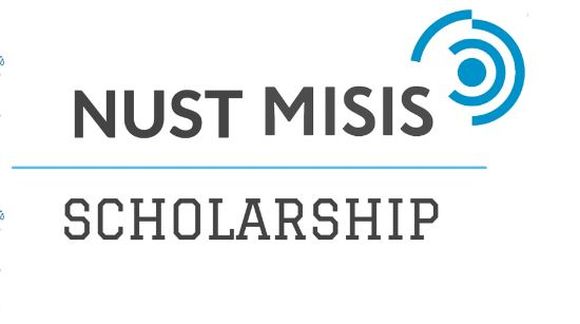
The National University of Science and Technology offers a free online course named as “Materials Science and Engineering”. The free online course is aimed to discover the various properties and structures of materials and build a solid foundation in engineering.
This engineering course presents a broad multidisciplinary approach to understanding and manipulating the mechanical, electrical, optical and magnetic properties of materials. The course will start on April 1, 2017.
Course At A Glance
- Length: 10 weeks
- Effort: 2-3 hours per week
- Subject: Engineering
- Institution: The National University of Science and Technology “MISiS”
- Languages: English
- Price: Free – Self Paced
- Certificate Available: Yes
- Session: The course will start on April 1, 2017
Providers Details
- About University: NUST MISIS is one of the leaders of technological education in Russia. Founded in 1918, it is the country’s leading university in the fields of materials science, metallurgy, mining, as well as it is actively strengthening its positions in the fields of biomaterials, nano- and IT technologies.
- Aim of University: MISiS is working to develop new mutually beneficial, collaborative relationships with international industrial and educational partners while continuing to nurture existing ones. The vision of university recognizes the seeming paradox that in the world of competition it is international cooperation that has the potential of creating an environment uniquely conducive to the attainment of the University’s goals and continuing evolution
Requirements
Basic knowledge of chemistry and physics is required for the course.
About This Course
- Benefits: The course content is closely related to chemical, mechanical, electrical, computing, and bio- and civil engineering. This course will provide key information about fundamental characteristics of a variety of materials including metals, ceramics, polymers, and electronic materials. The language of the course is English.
- Importance of the Subject in Today’s Scenario: Materials Science and Engineering (MSE) keeps your options open. With a degree in MSE, you can work in cutting edge industries such as mining, biomedical and aerospace, or you can move on to obtain an advanced degree in almost any field. Graduates are not locked into a particular industry, which means materials engineering is a recession tolerant career choice.
How to Join This Course
You should register yourself through the given link to join this free on-line course: https://courses.edx.org/register
Course Format
Week 1: Classification and Properties of the Materials
Introduction to basic materials science concepts, such as classes of materials and their primary properties. Also, has some general information about the Materials Science and its role in the society.
Week 2: Atomic Scale of the Materials: Atomic Bonding, Bond Energy, Bond Stiffness
Explanation of elastic and thermodynamic properties of the materials on the basis of the electron structure of atoms and the specific types of atomic interactions within the material.
Week 3: Atomic Structure and Mechanical Properties of Materials
Discussion about the major dependence between the mechanical properties of the materials and their atomic structure.
Week 4: Crystal Lattice Scale of the Materials: Crystal Structures and Their Properties
General information about the classification of crystals and dependence between mechanical properties and crystal structure of materials.
Week 5: Nano and Micro- Scales: Polymorphic Transformations; Defects in Solids; Grains and Grain Boundaries
From the dislocations to the tin plague: everything that you wanted to know about the microstructure of materials, but were afraid to ask.
Week 6: How to Shape the Microstructure and the Mechanical Properties of the Materials
Introduction to complex techniques, which allows the engineers to alter the properties of materials by modification of materials’ microstructure.
Week 7: X-ray Diffraction Analysis of the Materials
Basic information about the diffraction and interference of different types of rays and how to use them to investigate the crystal structure of the materials.
Week 8: Transmission Electron Microscopy
General information about one of the most powerful tools of modern microscopy, a tool which allows the scientist to directly observe the atoms in materials.
Week 9: Advanced Scanning Electron Microscopy
Overview of the scanning electron microscopy – from the most widely used materials investigation techniques to state-of-art integrated nano-laboratories.
Week 10: Conclusions
A brief summary of the course, which re-iterates the basic materials science and engineering concepts in the light of discussed concepts.
Why Take This Course
- Advantage of Course: This engineering course presents a broad multidisciplinary approach to understanding and manipulating the mechanical, electrical, optical and magnetic properties of materials. The course will provide the essential basis for an engineering education.
- Certificate: You can pursue a Verified Certificate to highlight the knowledge and skills you gain ($49). Add the certificate to your CV or resume, or post it directly on LinkedIn
Learning Outcomes
- How different levels of materials’ structure define their properties
- How processing of the materials affects their properties and performance
- Materials characterization techniques, including scanning electron microscopy, transmission electron microcopy, X-ray diffraction
Instructors
Alexander S. Mukasyan: Alexander is Professor of Chemical Engineering at the Notre Dame University (USA) and NUST MISIS (Russia), and also Director Manager of Laboratory of Advanced Electron Microscopy ND-IIF (Notre Dame University, USA) and Director of Center of Functional Nano-Ceramics (NUST MISIS, Russia).
Suggested Reading
Secondary school physics and chemistry will helpful to you during the course.
You Might Also Be Interested In
If you are interested you can also join “Robotics: Locomotion Engineering” free online course.
Conclusion
- The study of materials science allows students considerable freedom to the depth of their understanding of such materials while being simultaneously engaged in real world research. This course consider that How the physical properties of metals, ceramics polymers, and composites are correlated with their internal structures (on atomic, molecular, crystalline, micro- and macro- scales) and operational conditions (mechanical, thermal, chemical, electrical and magnetic)
- Your Certificate provides a detailed transcript of what you’ve learned. This includes how long you spent studying the course and your average test score. The Certificate and transcript give you evidence to show during job or university applications, or appraisals.
Detailed Information
For more information about the course, you can check the given link:
https://www.edx.org/course/materials-science-engineering-misisx-mse1x#!

